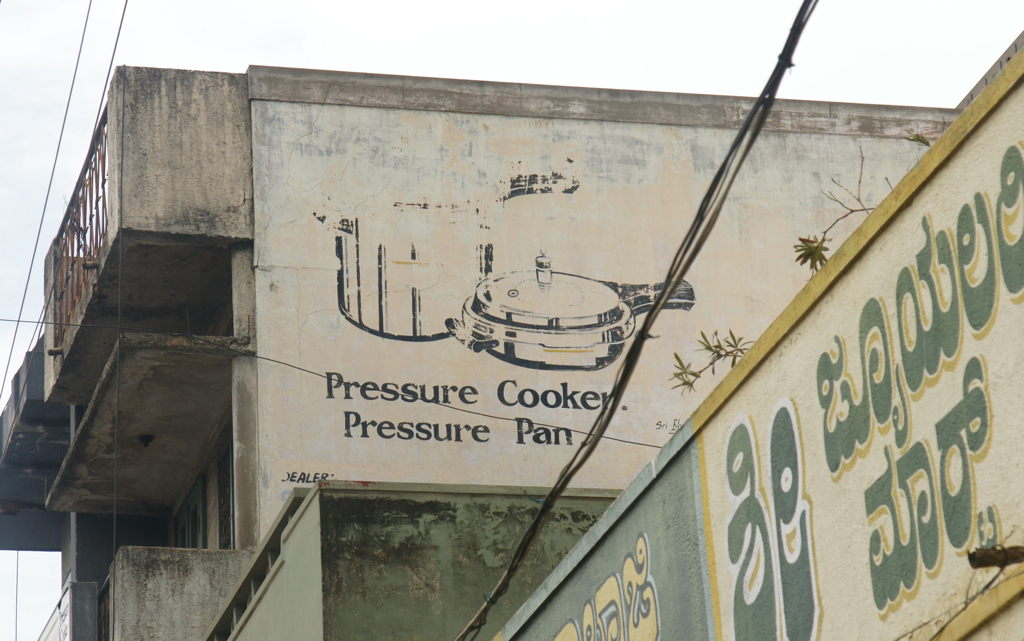As we kick off a new fortnightly series on The Margins, what experiments with the Instant Pot teach us about the art of flash fiction

August 14, 2020
Submit to The Margins’ new fortnightly flash fiction series here.
A year ago, as I started to dream up a flash fiction series for The Margins, I joined an Instant Pot Facebook Community. At the time Instant Pots were unknown to me, but I have always loved a slow cooker. Soups, stews, broth from lamb bones. Even chocolate fondue. On the occasion of poet Monica Sok’s visit to my apartment, I mulled wine with star anise and cinnamon sticks. With a slow cooker, trust is required. You press a button, set it for 6 or 8 hours. It takes one full hour for the number to change! Has it even started? Seeking evidence, I touch the outside, which is designed to be touched, so it doesn’t get warm. It’s confounding. Oh!—for a person who needs affirmation (my love language!), there’s so much tension to release.
Earlier this spring during quarantine, as I sheltered with my daughter, partner, and my parents in my parents’ home outside of New York City—a house my family has lived in for 29 years—a pressure cooker broke, and my mother opened an Instant Pot from storage.
Pressure cookers terrify me. The noise! The hiss! The element of surprise! This fear is one of the many reasons I am a bad daughter, a disappointing granddaughter, a lackluster homemaker. I have been unable to make some of my family’s most beloved Punjabi recipes—dahl, kitchari, rajma—that growing up, I would eat four to six times a week. I thought, maybe I can reverse this by learning how to cook with the Instant Pot during quarantine—but first I have to trust that it’s on, trust that I pressed the right buttons, trust the machine does the correct thing.
During quarantine, missing things I would order at restaurants, I decided to make steamed artichokes. As I opened the Instant Pot lid, I had an intention—a gathering of ingredients and myself—and faith that I knew what the ending would be. So I pressed buttons, hit start, and waited for the silent pressure to build. And I released the valve. Like the process of using an Instant Pot, flash fiction assembles ingredients, moves swiftly, and its end arrives sooner than expected. Ideally, a piece of flash fiction, like an Instant Pot creation, can be simple & rich or complex & multifaceted or anywhere in the middle. And reading a work of flash fiction is like being a Homerian Lotus Eater, opening an artichoke, peeling the petal-like leaves, scraping the flesh with teeth, dipping into a simple but delicious lemon butter sauce.
Like the Instant Pot, flash fiction is delicious. Here is a flash fiction recipe:
- Inspiration
- Gather ingredients
- Press the Button & Trust
- Pressurize
- Release the steam
Step 1. Inspiration. Reading inspires writers. While I love reading juicy novels, I have had periods of time when life was too chaotic and I struggled to finish a book. In those moments, a slim collection, called Flash Fiction: 72 Very Short Stories, a book whose pages are predominantly white, lived in my bag—a go-to when I needed to read a little something, a book that inspired me to write, a book that I always wished included more stories by writers of color. As a teacher, I cannot remember how many times I have taught “Snow” by Julia Alvarez or “Girl” by Jamaica Kincaid (both anthologized in that book) to demonstrate how much story can be made with so few words. During Bushra Rehman’s “Two Truths and a Lie” workshop at AAWW in 2008, I wrote a piece as an homage to “Girl” that emerged as a burst, but which I revised on and (mostly) off for seven years.
Beloved teacher Meena Alexander loved fragments—which serve as building blocks within some of the most innovative Asian American fiction writing. Among the unforgettable books I read in the past decade is Problems by Jade Sharma, who died tragically just as her work was entering and stunning the world. The fragmentary nature of Sharma’s writing expressed her vital voice, tonally represented altered consciousness through tonal shifts, and looked like a necklace of flash fictions on the page. Matthew Salesses’ I’m Not Saying, I’m Just Saying is a novel composed of 115 titled flash fictions, and serves as a masterclass in what a flash fiction title can do: “Asian’s Didn’t Plant Apples,” “How to Give Birth to a Five-Year-Old,” and “For The Record, I Was Never Fooled.” I read Ocean Voung’s novel On Earth We’re Briefly Gorgeous, as a series of flash fictions separated by line breaks, each mini-section a near perfect arc of a story, with the poetic lyricism and rhythm.
Reader, this is not an exhaustive list of Asian Americans who write flash fiction. I cannot compose an exhaustive list because I have read far less than I would like to. Just like the Instant Pot compresses cooking time, the intention of this series is to luxuriate in rich fictional words within the span of minutes.
Step 2. Gather ingredients. Flash fiction is everywhere. From the satirical pages of The Onion, McSweeney’s, The Reductress, Shouts & Murmurs; to stand-up sets and sketch-comedy scenes where comedians craft personas and heightened narratives; to Instagram captions to ekphrasis-embodying memes; Tweet-stories by Teju Cole; spells, incantations, and curses; even narrative recipes are containers for flash fiction. The container itself, like a tiffin or bento box or Instant Pot, can encapsulate anything.
Even as a hopeless romantic, love letters operate as flash fictions, as the narrator in those letters are often more tender and present than the writer. And the character of the recipient often feels more lovable than the reader. Perhaps this is why we hold onto and reread those letters, and by we, I mean me. Even the text messages we hold onto from relationships long gone, from numbers blocked, are flash fictions.
When flash fiction mirrors auto-fiction or metafiction, is there much distinction between flash fiction and a prose poem? In an interview on the Between the Covers podcast, Hanif Abdurraqib said that his “prose blocks” were first poems because he wrote “with entirely performance in mind, and didn’t have a relationship with line breaks,” and thus wrote in prose blocks that resembled monologues that drama club kids memorized. Coming later to stanzagraphs, Abdurraqib continues, “Truthfully, I think that the prose block became my form because there is an underrated musicality in a well-structured prose block. If you are to use ampersands or if you are to use no punctuation at all. I also grew up on punk scenes, and I love a short, fast and loud song.” A prose poem with a speaker whose voice pierces the page operates as flash fiction.
When I imagined this series, I thought back to the ways the AAWW had incubated me as a baby artist/writer/organizer in the 1990s, and the way I quivered on those folding beige metal chairs in the St Mark’s Place basement, witnessing spoken word, performance art, open mics—all the story-telling that would grace the carpeted stage for five to seven minutes. For me, the Workshop’s carpet—stained by coffee, soy sauce and tamarind chutney that accompanied SAWCC meetings’ samosas—was my campfire. We were each other’s kindle, then, and now, in person (pre-pandemic), and virtually, and this flash series strives to channel that bonfire of punk songs—high-octane, breathless, short, fast, loud.
Step 3. Press the Button & Trust. Like the Instant Pot with its tender artichokes, I start writing to an end—an imagined last line—and I begin to trust that I will get there, or that I will get to a different, and better, last line. As someone who began writing seriously later in life, with a baby and two full-time careers, flash fiction was my port of entry. I have been lucky enough to find editors who published a few of these, but most of my short short stories remain seeds that are unfinished, seeds that gave me the belief that I could write. Much like how joining a Facebook Instant Pot community and hardly checking the page propelled me to Instant Pot—belief is the step before writing. Flash fiction is a time-bender, and in these pandemic days, I have joined other writers in virtual creative community where we write together, where I am warmed by writing prompts as collective kindling—one of which was the seed for the first piece in this series, guided by writer David Hollander and based on Margaret Atwood’s Bread. As we write together, our faces indexed in little rectangles on the screen, in minutes, a few bones can conjure a rich broth draft.
But that does not mean flash fiction is easy; in fact, as writer and editor Todd Kaneko says, “flash fiction achieves its density without becoming obtuse or unwieldy… that’s so much easier to demand as a reader than it is to execute as a writer.” Sometimes it takes seven years to edit a piece of flash fiction—as some of the editing is time to just live. Like aerialists suspended in long silks, flash writers can make it seem so effortless, but so often the crafting requires great skill.
Step 4. Pressurize. For The Margins, writers and stories are gathered. I wanted to create a place for the single short story, one that stands on its own, one that may have no other sibling or cousin stories. A gathering point for writers who may identify more as journalists, poets, novelists, playwrights, critics, and comedians. A home for fiction writers who may write long short stories, or longer stories that we call novels, but have a short piece, maybe in a drawer, maybe in an off-brand Moleskine, or in a folder called “Darlings.” Most importantly, I envision this as a place for a person who has a kernel, who wants to tell a story, crafts something quite short, loud, fast, and remarkable, and wants a loving home for it.
Step 5. Release. I hope you, dear readers, enjoy this series—that some pieces are a jolt to your day, and others you savor, reread and revisit as if they were a favorite book in your bag. I imagine you, in a state of longing, immersing yourself in words—maybe while waiting in a socially distanced line or standing in front of your Instant Pot. Alexander Chee says, “We write what we believe a story is, and so our sense of story is formed by the stories we’ve read.” I wish for these stories to shift what we all believe a story is and what a story can do. Please read, reread, screenshot and share a spark. Like, comment, and post. Be inspired, write, and submit. Join us!



